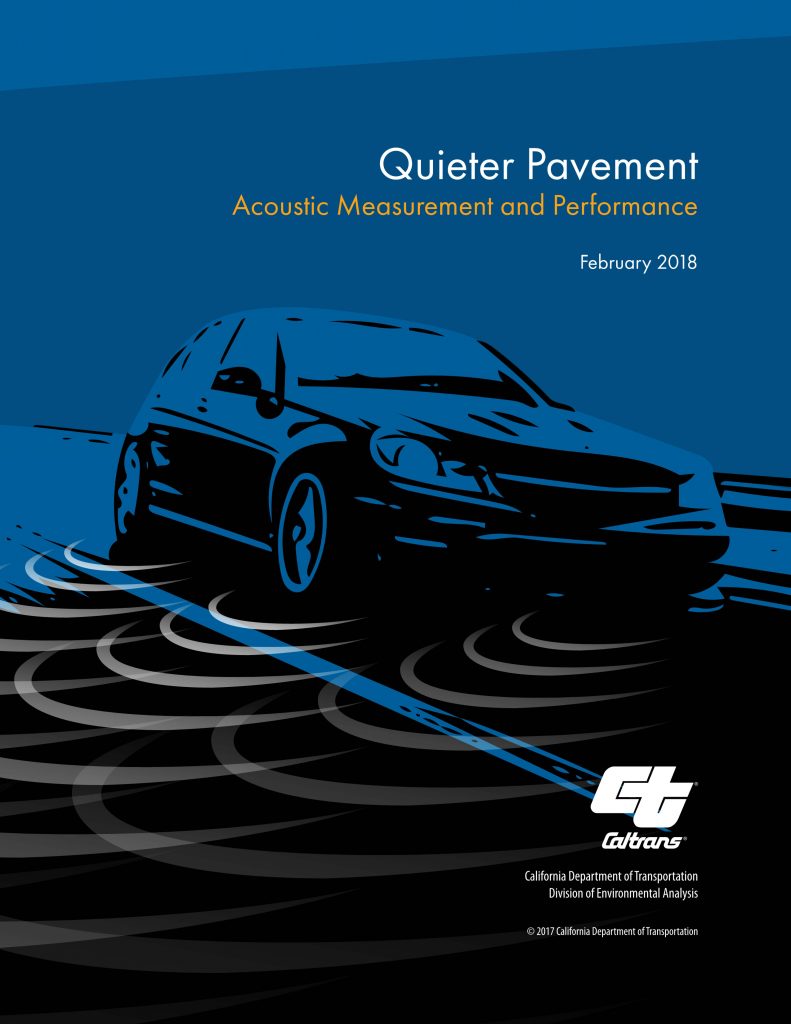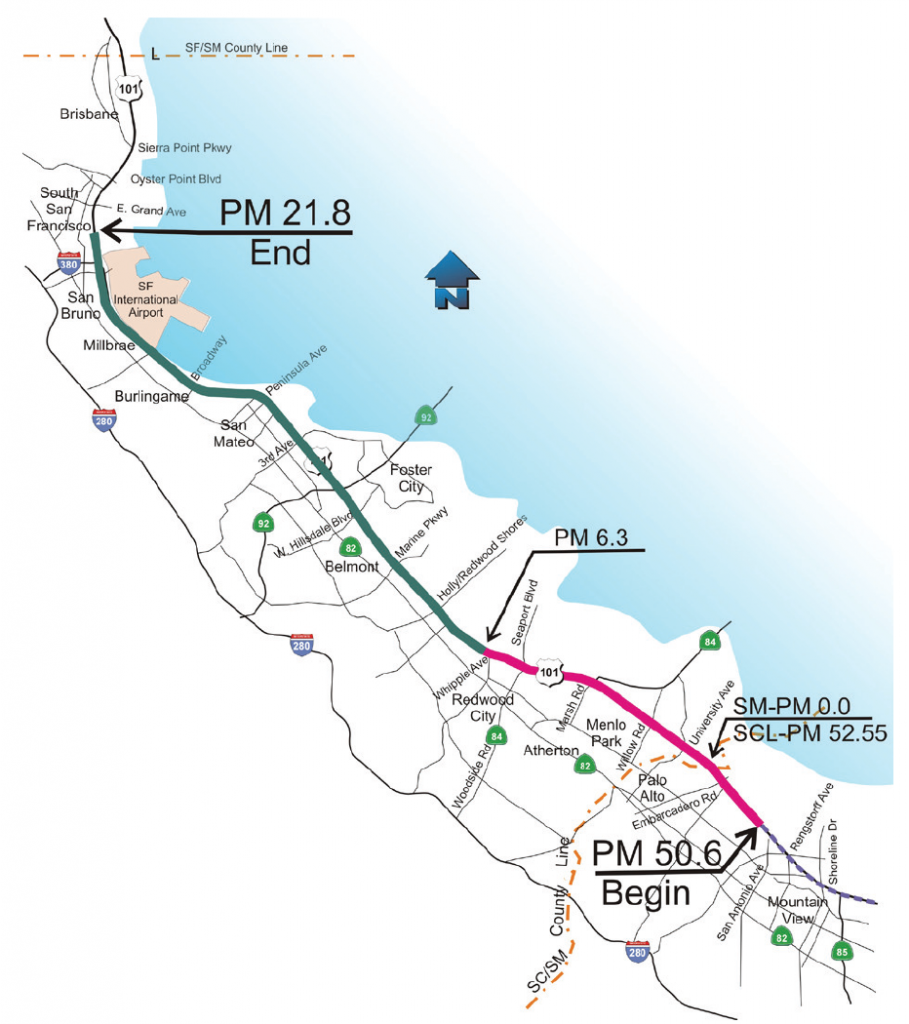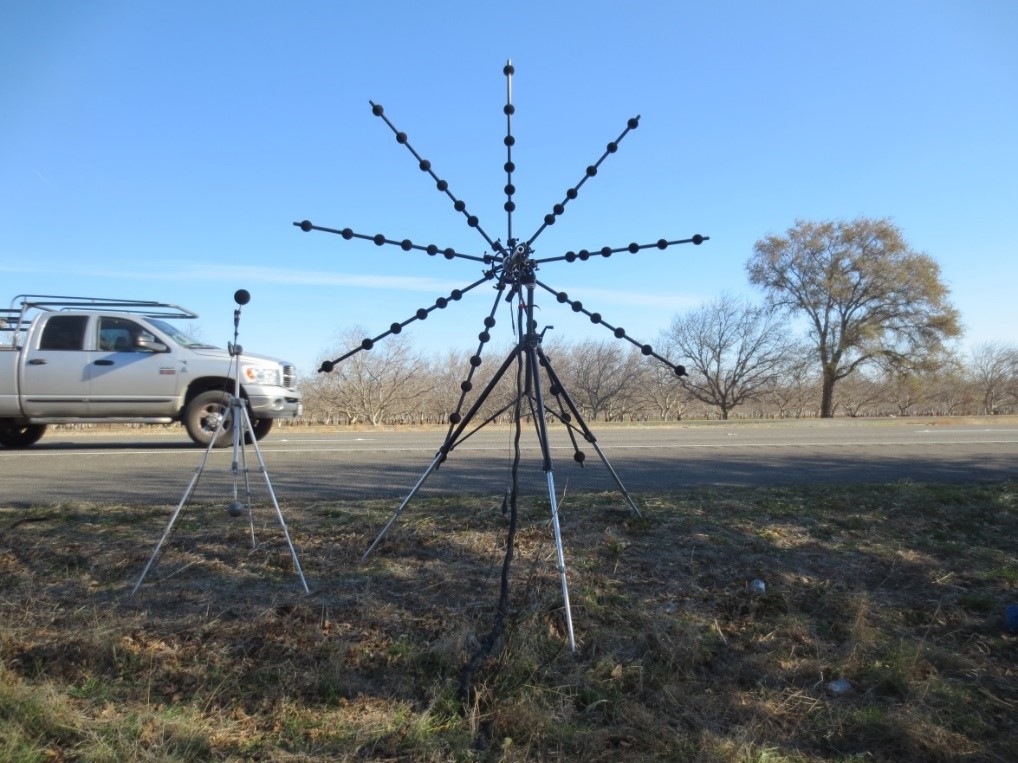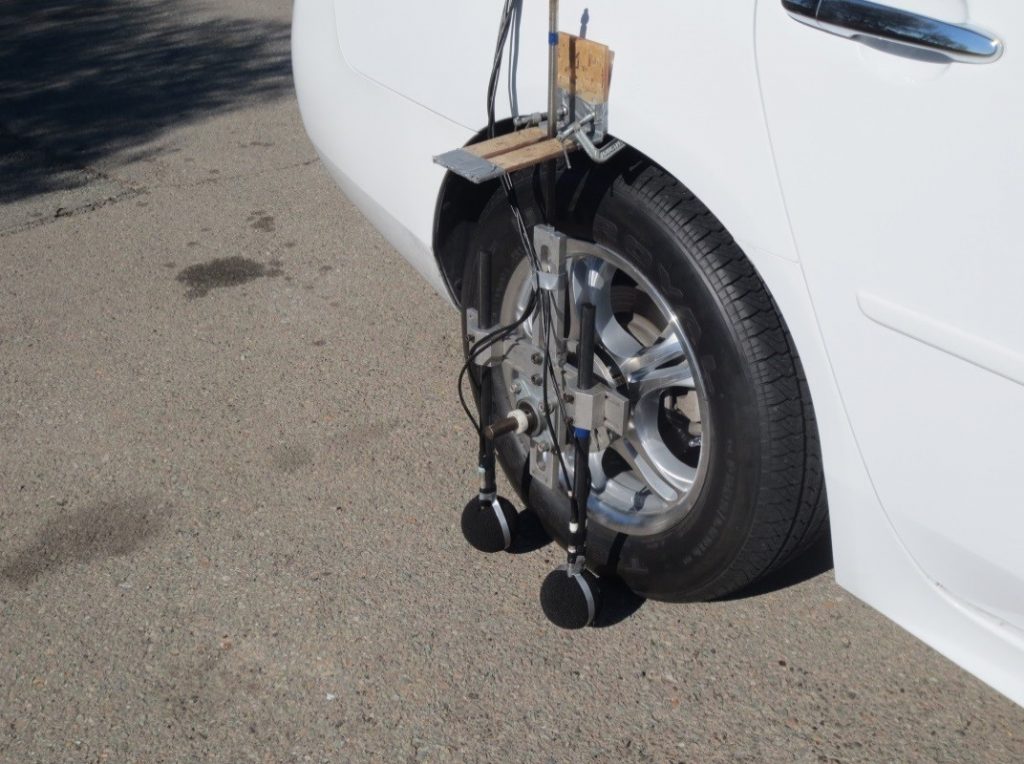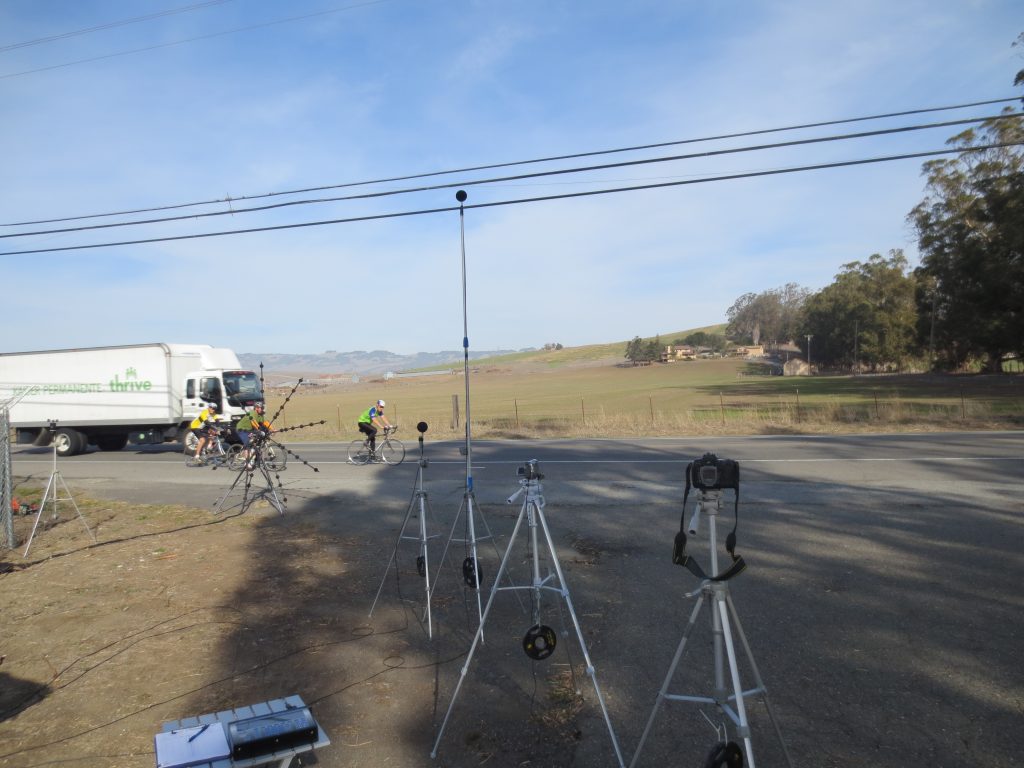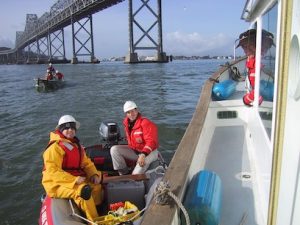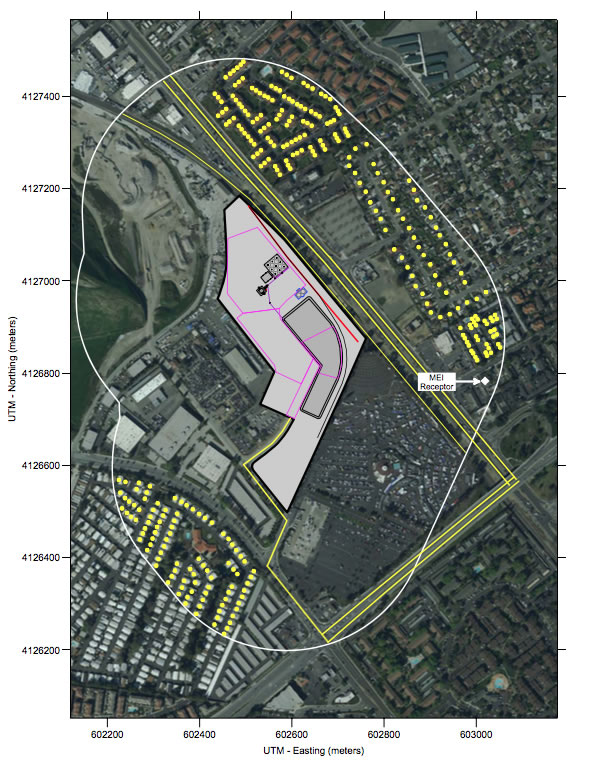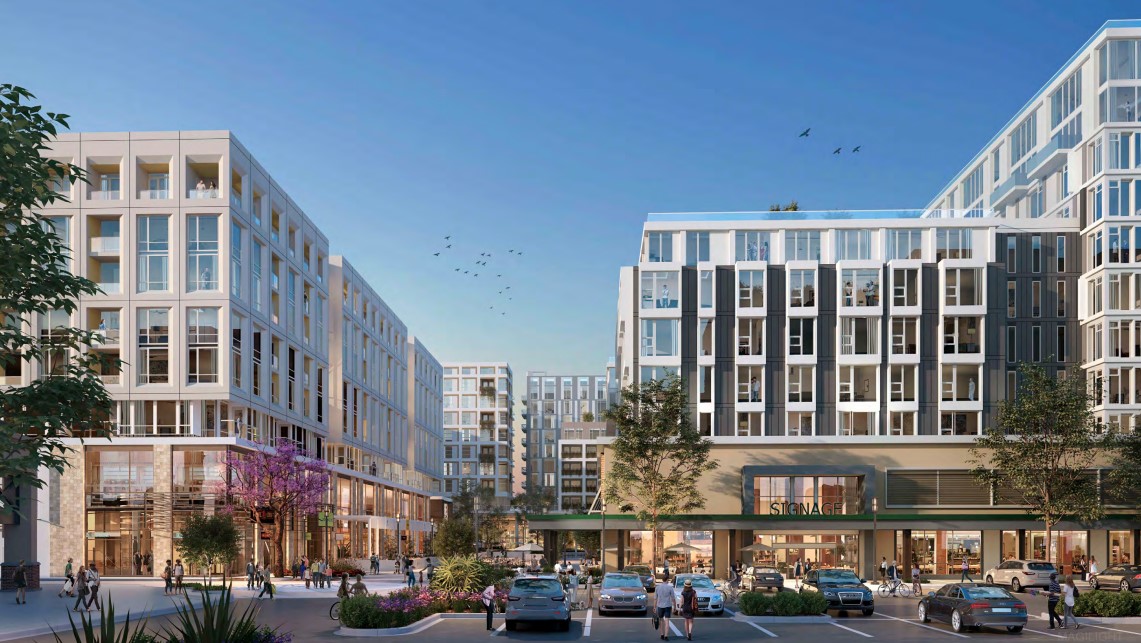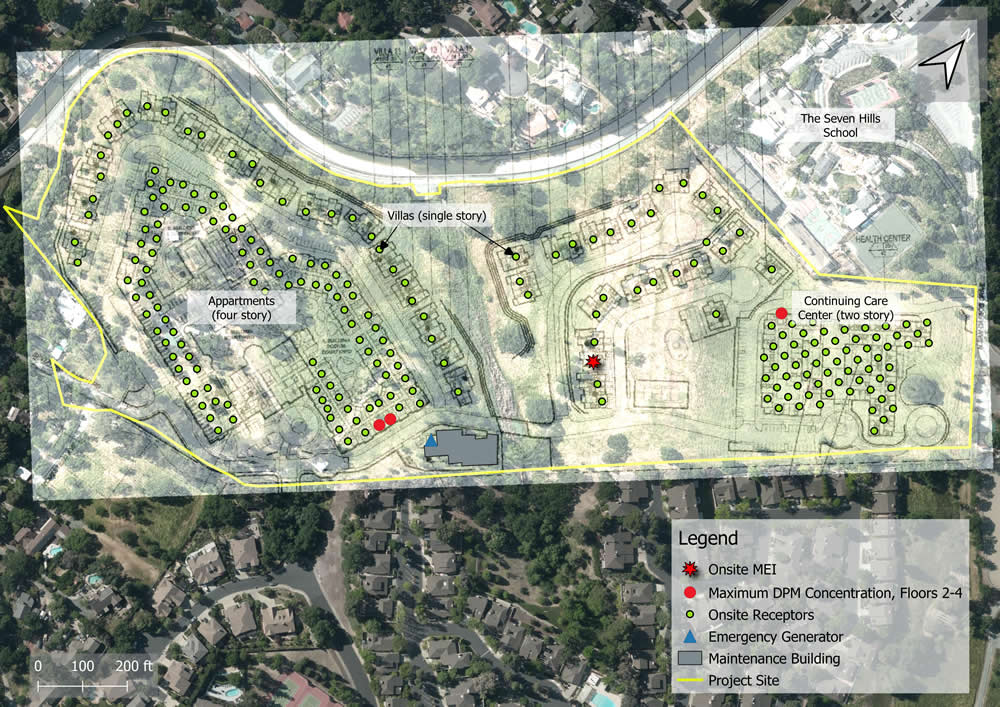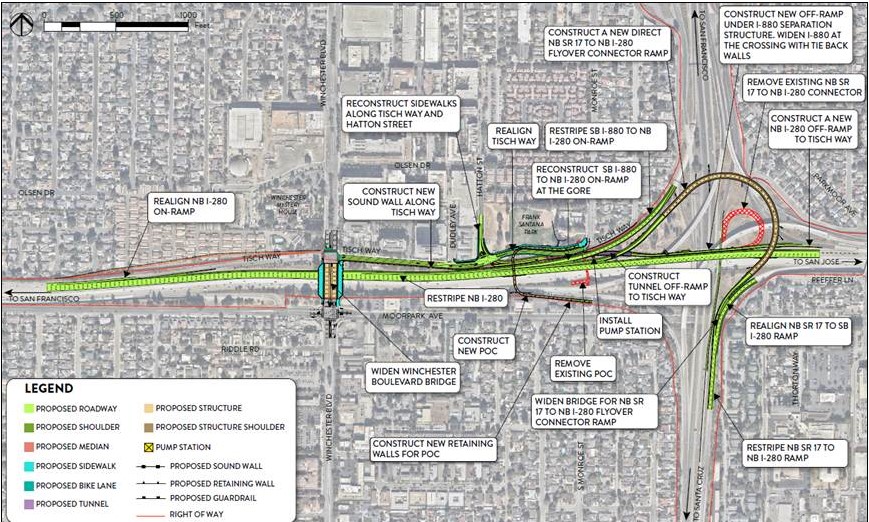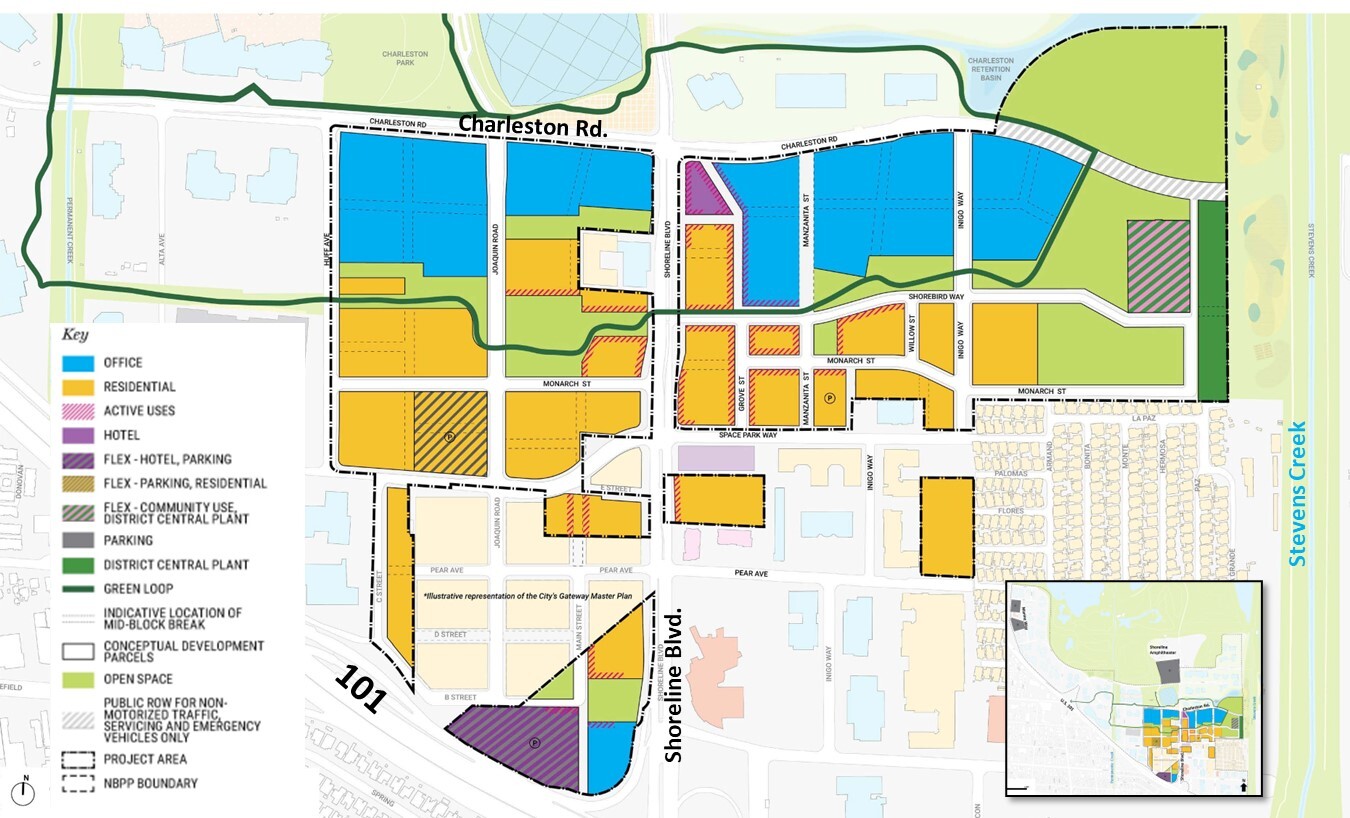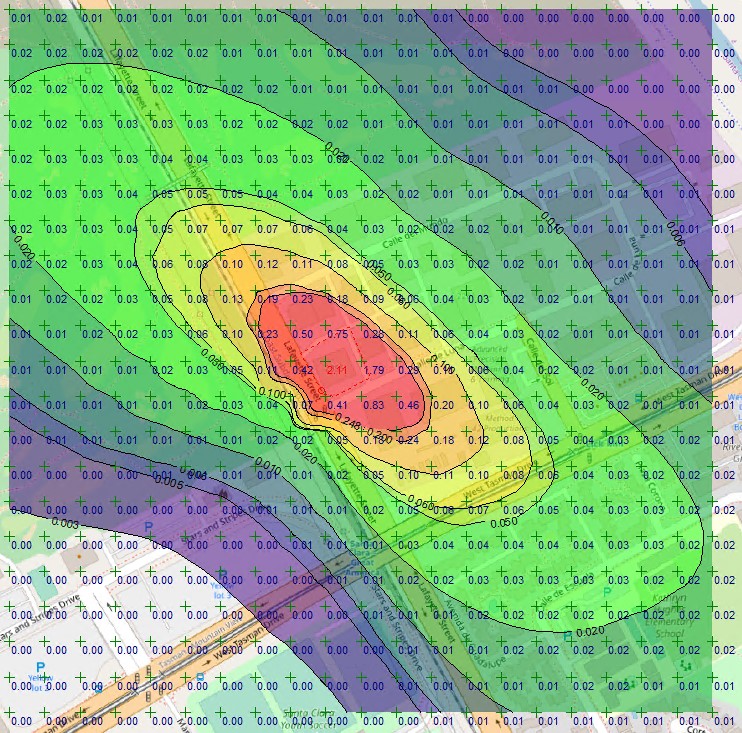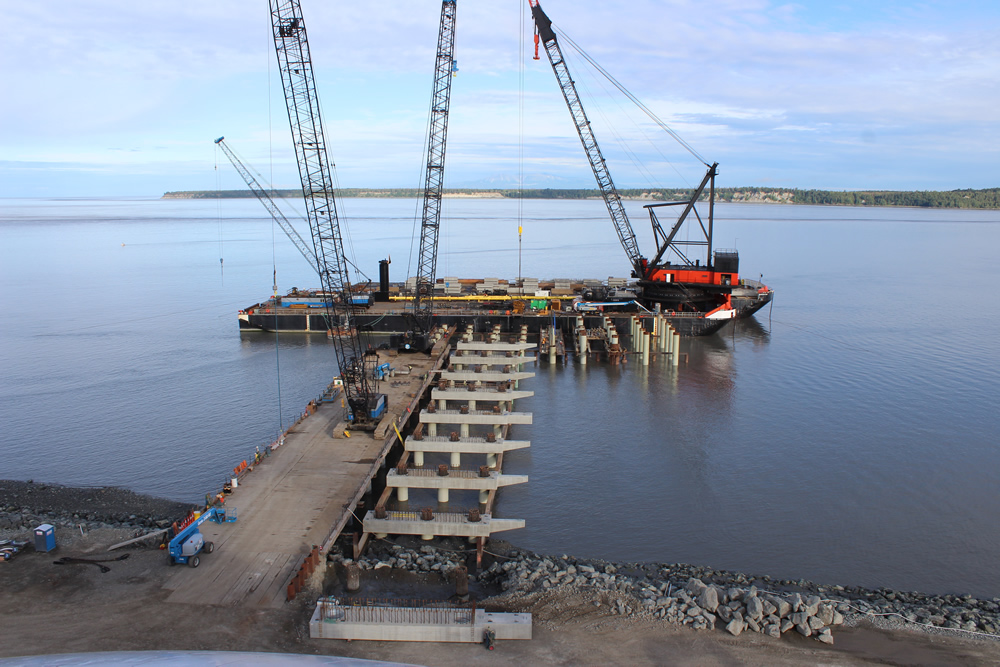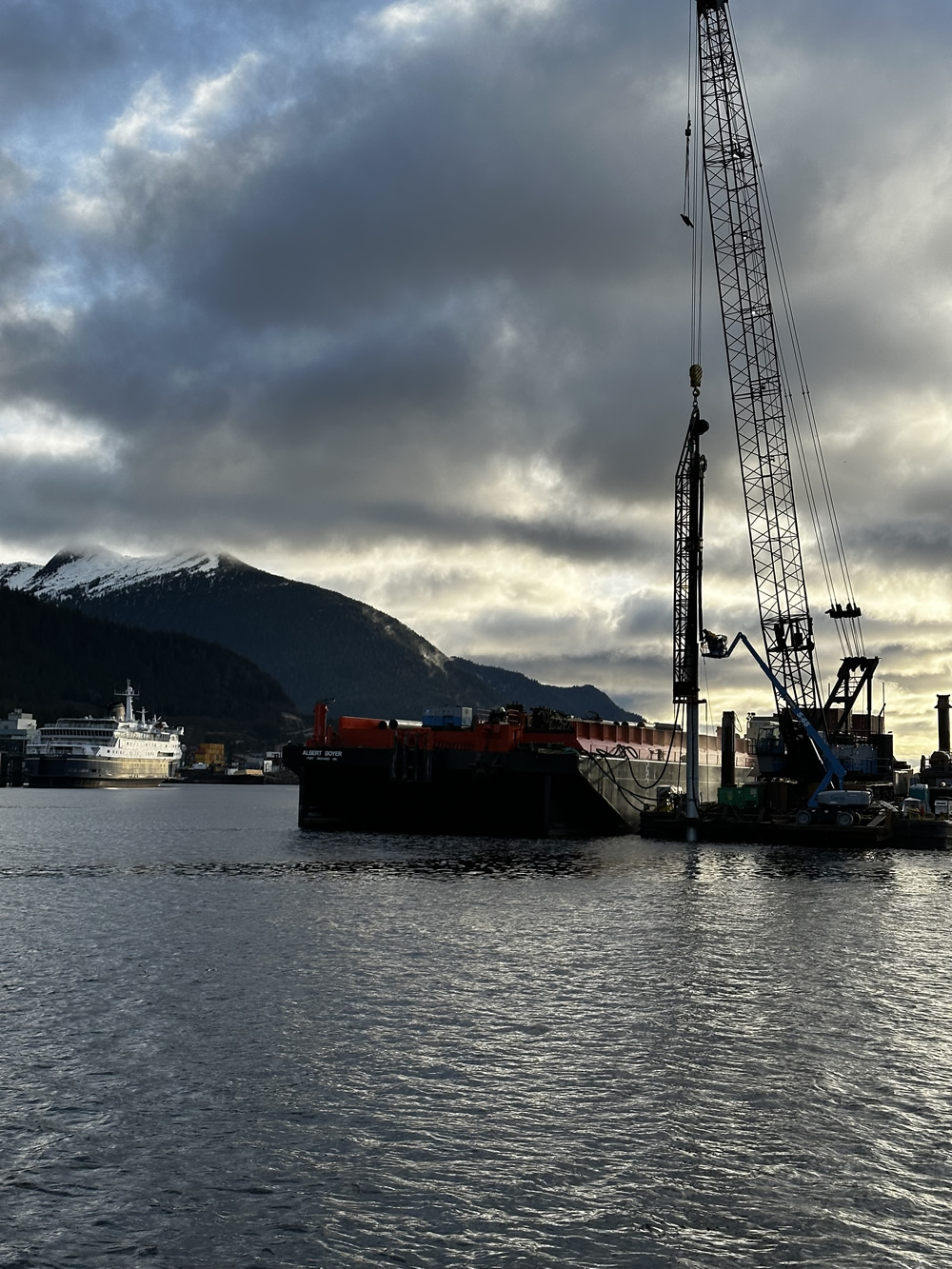Caltrans, Quieter Pavement: Acoustical Measurement and Performance
I&R developed a comprehensive guidance manual on quieter pavement to be used by noise practitioners and pavement engineers, which summarizes quieter pavement research conducted over a period of about 18 years. The document contains a basic overview of pavement acoustics and how they relate to highway traffic noise, a synthesis of quieter pavement research conducted by or initiated by Caltrans over a period of about 18 years, a summary of the development of the On-Board Sound Intensity (OBSI) methodology of measuring tire-pavement noise at-the-source, a comparison between several measurement methods, a summary of current applicable policy and measurement methodology, and recommended best practices in design. Detailed description of tire-pavement research topics include tire-pavement noise levels on highways and low-speed roads, quieter flexible and rigid pavements, porous pavement, rubberized surfaces, surface texture, pavement joints, bridge decks, grinding, acoustical longevity and durability, heavy vehicles, and a cost-benefit analysis of barriers and pavement. Over 170 references are included. An On-Demand Course was developed for use by Caltrans engineers.
An online version of the Quiter Pavement Manual can be accessed at http://www.dot.ca.gov/env/noise/docs/quieter-pavement.pdf
US 101 Managed Lanes, Santa Clara to San Mateo Counties, CA
I&R prepared the noise study for the US 101 Managed Lanes Project, which proposed to add an HOV lane in each direction on US Highway 101 from the terminus of the Santa Clara County express lanes to I-380 in northern San Mateo County, California, over a total alignment length of 22 miles. As part of the project, many existing noise barriers were proposed to be relocated. The project alignment experienced heavy congestion during most waking hours, resulting in an innovative noise measurement survey approach. The noise study included identification of potential sensitive receptors, measuring existing noise levels at 120 locations, developing and validating the TNM noise model, modeling existing and future noise levels, identifying noise impacts, evaluating noise the feasibility and reasonableness of noise abatement, prediction of construction noise levels, and documentation of results in a noise study report.
NCHRP Truck Noise Project
In 2013, I&R began research on heavy truck noise sources for the National Cooperative Highway Research Program. I&R’s goal was to determine the height distributions and spectral content for heavy trucks, building from earlier research sponsored by Caltrans and the National Coorperative Highway Research Program (NCHRP). Utilizing acoustic beamforming technology, I&R was able to create acoustically visual source maps to indicate predominant noise sources.
During the research, four sites in Northern California were visited along with sixteen additional sites in North Carolina. These sites had an array of different pavement types and speed limits. In total, the noise source regions for 1289 heavy trucks were mapped from vehicle traffic on public highways.
Marine Construction Noise
Beginning in 2000, I&R has been involved in studies to monitor underwater noise resulting from piledriving on several projects in the San Francisco Bay Area and other parts of the country utilizing differing pile types, hammers, and sound attenuation systems. Typically, the monitoring was completed in response to orders prepared by NOAA Fisheries.
In 2005, Caltrans and I&R received the Environmental Excellence Award from FWHA for the application of bubble-curtain technology used on the San Francisco Bay Bridge to minimize underwater noise impacts on endangered fish species. In 2007, the firm completed its technical contribution to the Caltrans Underwater Pile Driving Guidance Manual with a compendium of underwater noise data for driving different types of piles and in a variety of underwater environments. Some of the other projects I&R has conducted investigating noise from underwater pile driving include:
- San Francisco-Oakland Bay Bridge (I-80)
- Benicia-Martinez Bridge (I-680)
- Richmond-San Rafael Bridge (I-580)
- Mad River Brudge in Eureka/Arcata (US 101)
- 10 Mile Bridge Replacement near Ft. Bragg (Highway 1)
- Point Isabel Foundation Repair, Emeryville
- Concord Naval Weapons Stations Pier 2
- Amports Pier 95 Reconstruction, Benicia
Granite Rock, San José
Illingworth & Rodkin, Inc. analyzed the air quality and greenhouse gas impacts associated with the modifications to the proposed Graniterock facility in San José, California. The project proposed was an expansion of their current concrete plant, aggregate/other construction materials distribution facility, and recycle yard operations. The project also included the addition of an asphalt plant and cementitious distribution facility. The existing equipment storage and maintenance yard would be removed from the site. In addition, the existing rail spur would be extended from a 25-railcar spur to accommodate 55 railcars with an increase in unloading capacity to 2,000 tons per hour. The expanded facility would operate 24 hours per day, seven days per week. The air quality analysis examined the change in emissions associated with the proposed project, identified best available air quality control measures for all aspects of the project and predicted the change in localized health risks to sensitive receptors. The greenhouse gas emissions analysis identified the overall increase in emissions and measures to reduce these below significance levels.
El Paseo and 1777 Saratoga Avenue Mixed-Use, San José
Illingworth & Rodkin, Inc. analyzed the air quality and health risk impacts associated with the proposed El Paseo and 1777 Saratoga Avenue Mixed-Use Village in San Jose for the construction and operation of up to 165,949 square feet of commercial space and 994 residential units configured in four mixed use buildings on an approximately 10.76-gross acre site. The site would also include approximately 2.8 acres of publicly accessible amenity space. The air quality analysis consisted of calculating construction and operational criteria air pollutants, assessing project construction and operation health risk impacts, evaluating health risk impacts of exiting cumulative sources, and identifying mitigation measures to reduce any emissions and health risk impacts to less-than-significant levels.
Spieker Senior Continuing Care Community, Contra Costa County
Illingworth & Rodkin, Inc. prepared the air quality and greenhouse gas evaluations for a senior living center proposed in unincorporated Walnut Creek, Contra Costa County, California. The project consisted of approximately 305 apartments, 55 cottages, a health care center with approximately 100 care units, and two two-story maintenance buildings on a site bordered by residences, a school, and a park. The air quality analysis consisted of calculating construction and operational criteria air pollutants, assessing project construction and operation health risk impacts, evaluating health risk impacts of exiting cumulative sources, and identifying mitigation measures to reduce any emissions and health risk impacts to less-than-significant levels. The greenhouse gas emissions analysis calculated the project’s emissions and compared them against significance thresholds.
I-280 Winchester Boulevard Interchange Improvements, San José
Caltrans, in cooperation with the Santa Clara Valley Transportation Authority (VTA) and the City of San José, proposed to construct improvements in the vicinity of the Interstate 280 (I-280)/Winchester Boulevard interchange in San José. The proposed improvements are intended to improve traffic operations and reduce congestion on the local roadways, enhance bicycle and pedestrian access and transit connectivity, and provide improved access from northbound I-280 to the Project area. Illingworth & Rodkin. Inc. modeled the preferred Build alternative for the interchange using the Roadway Construction Emissions Model (RCEM) and the Caltrans version of the EMFAC2017 emissions model (CT-EMFAC2017). The air quality analysis used Caltrans’ standard annotated report outline and consisted of assessing regional air quality impacts, analyzing project level conformity for carbon monoxide hot-spots and PM2.5, evaluating mobile source air toxics, assessing GHG emissions, calculating construction air quality impacts, and identifying mitigation measures.
Google North Bayshore Master Plan, Mountain View
Illingworth & Rodkin, Inc. analyzed the air quality and health risk impacts associated with the proposed mixed-use Google North Bayshore Master Plan (NBSMP) project located in Mountain View, California that was approved on June 13, 2023. The proposed 151-acre NBSMP area is located to the north of Highway 101 and is bisected by North Shoreline Boulevard, within the North Bayshore Precise Plan. Implementation of the proposed NBSMP would allow for the demolition of the existing uses and development of:
- 7, 000 residential units;
- 26.1 acres of public parks and open space;
- 233,960 square feet of retail uses;
- 55,000 square feet of community facilities;
- 3.14 million square feet of office space;
- New public and private streets, new on- and off- site bicycle and pedestrian improvements; and
- A private district utility system.
The air quality analysis consisted of calculating construction and operational criteria air pollutants, assessing project construction and operation health risk impacts, and evaluating health risk impacts of existing cumulative sources. In addition, several potentially significant impacts were identified that required unique mitigation measures. Best available measures were identified to control construction emissions for existing and new sensitive land uses.
Port of Alaska Modernization Program (PAMP), Anchorage, Alaska
Illingworth & Rodkin, Inc. worked with the Port of Alaska (POA) in modernizing its facilities in Anchorage through the Port of Alaska Modernization Program (PAMP). Pile driving during the first season of the Petroleum and Cement Terminal (PCT) Project began in April 2020 and continued into the fall, with the first bout of hydroacoustic monitoring occurring in June 2020. Measurements were made between 10 and 50 meters from the location of each active pile since access to the construction sites, configuration of structures, and strong tidal conditions made consistent measurements at 10 meters difficult. Measurements were also made from bottom anchored moorings at the 600- to 860-meter range and at about 2,600 meters to compute transmission loss to calculate distances to the Level A and Level B harassment zones as implemented by the National Marine Fisheries Service (NMFS) under the Marine Mammal Protection Act (MMPA). Measurements were conducted for the following pile installation activities:
- Vibratory installation of four 24-inch template piles (attenuated with an air bubble casing)
- Vibratory installation of six 24-inch temporary trestle piles (attenuated with an air bubble casing)
- Vibratory installation of five 36-inch template piles (attenuated with an air bubble casing)
- Vibratory installation of ten 48-inch piles (attenuated with an air bubble casing)
- Vibratory installation of one 48-inch piles (unattenuated)
- Impact pile driving of eleven 48-inch piles (attenuated with an air bubble casing)
- Impact pile restrike of two 48-inch piles (attenuated with an air bubble casing)
- Vibratory installation of five 72-inch air bubble casings (unattenuated)
- Vibratory removal of one 36-inch temporary pin pile (attenuated since in very shallow water).
Gravina Island Airport Ferry Layup Facility
Illingworth & Rodkin, Inc conducted a sound source verification (SSV) study measuring different types of underwater sound produced by down-the-hole (DTH) drilling for construction of an airport ferry layup facility and a freight facility on Gravina Island in late 2022 and early 2023. The SSV included measurements of DTH drilling for two 30-inch and two 24-inch diameter piles in rock sockets and for seven total tension anchors. The measured rock socketed piles were dolphin piles installed for the Gravina Freight facility. Measurements were made when four tension anchor piles were installed for the freight facility and when three tension anchors installed at the Gravina Airport Layup Facility. Measurements were conducted at about 10 meters (m) from the activity, about 30 to 100 m, about 500 m, and about 1,000 m. Measurement positions varied based on the anticipated sound levels and ability to measure with the presence of background sounds. Some of the quieter sounds from tension rock anchor installation could not always be clearly measured above background at further positions beyond 100 m. A statistical regression of sound levels and distance from the pile were computed to provide the source sound level and sound transmission loss coefficient.

